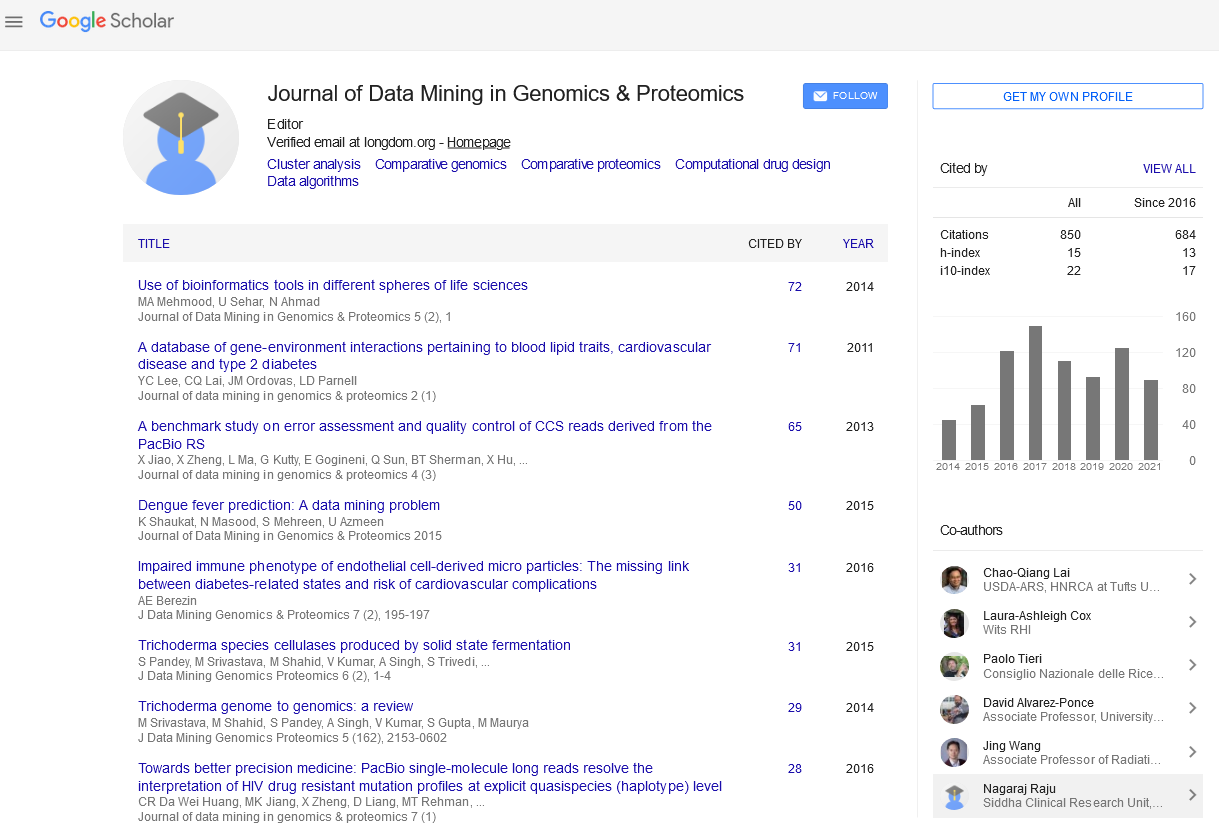PMC/PubMed Indexed Articles
Indexed In
- Academic Journals Database
- Open J Gate
- Genamics JournalSeek
- JournalTOCs
- ResearchBible
- Ulrich's Periodicals Directory
- Electronic Journals Library
- RefSeek
- Hamdard University
- EBSCO A-Z
- OCLC- WorldCat
- Scholarsteer
- SWB online catalog
- Virtual Library of Biology (vifabio)
- Publons
- MIAR
- Geneva Foundation for Medical Education and Research
- Euro Pub
- Google Scholar
Useful Links
Share This Page
Journal Flyer

Open Access Journals
- Agri and Aquaculture
- Biochemistry
- Bioinformatics & Systems Biology
- Business & Management
- Chemistry
- Clinical Sciences
- Engineering
- Food & Nutrition
- General Science
- Genetics & Molecular Biology
- Immunology & Microbiology
- Medical Sciences
- Neuroscience & Psychology
- Nursing & Health Care
- Pharmaceutical Sciences
Abstract
Comparative and Evolutionary Studies of Mitochondrial and Cytoplasmic Pyrophosphatase (PPA) Genes and Proteins
Roger S Holmes, Kimberly D Spradling-Reeves and Laura A Cox
Inorganic pyrophosphatase (PPA; PPase) (EC: 3.6.1.1) is a member of the diphosphatase enzyme family which functions as a diphosphate hydrolase within the cytoplasm (PPA1) and mitochondria (PPA2) of vertebrate tissues. PPA1 and PPA2 amino acid sequences and structures and PPA-like gene locations were examined using bioinformatic data from several genome projects. Sequence alignments and key conserved amino acid residues were also studied (human PPA2 residues identified): the mitochondrial signal peptide (1-31); and active site residues responsible for Mg2+ binding (164Asp, 169Asp and 201Asp), substrate binding (127Arg) and serving as the proton donor site (138Tyr). Predicted 2D and 3D structures were identified for vertebrate PPA1 and PPA2 using the reported yeast PPA1 structure (PDB: 1E9G). Vertebrate PPA1 and PPA2 genes usually contained 11 or 12 coding exons, respectively, with an extended exon 1 and an additional exon 3 observed for vertebrate PPA2 genes. Transcription factor binding sites and CpG104 were identified within the human PPA2 gene promoter; and MiR-590 for the PPA2 3’UTR. Phylogenetic analyses suggested that an ancestral invertebrate PPA gene underwent a gene duplication event to form 2 separate lines of vertebrate gene evolution: PPA1 and PPA2.


